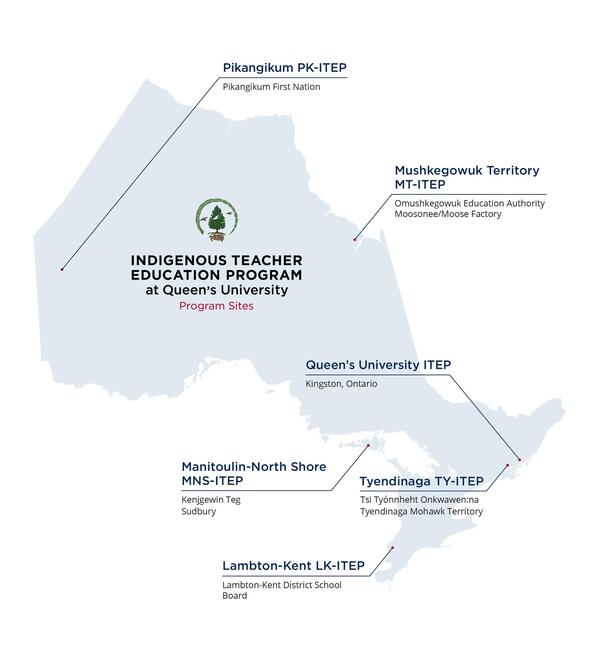 Since the Truth and Reconciliation Commission’s Final Report was released in 2012, there has been increased attention on reconciliation, including the Report’s specific calls for improvements to Indigenous education. At the same time, the population of Indigenous people in Canada has been growing, meaning more young Indigenous learners entering school with a need for education that reflects, supports, and fosters their identities.
Since the Truth and Reconciliation Commission’s Final Report was released in 2012, there has been increased attention on reconciliation, including the Report’s specific calls for improvements to Indigenous education. At the same time, the population of Indigenous people in Canada has been growing, meaning more young Indigenous learners entering school with a need for education that reflects, supports, and fosters their identities.
These two factors are raising an important question: how do we equip more Indigenous Peoples for careers in teaching, whether in Indigenous communities or spaces where they can share their perspectives and cultures with non-Indigenous students?
This is an issue Queen’s Faculty of Education has been addressing since the 1970s, with the creation of the Indigenous Teacher Education Program (ITEP).
“The program started with the vision and strength and the power of a faculty member named Cecil King,” said Peter Chin, Associate Dean of Teacher Education. “Thanks to his work, we have run teacher education programs in Fort Frances, on Manitoulin Island, in Moosonee, and a number of other places as well.”
Today, ITEP is offered in two distinct deliveries: an on-campus delivery with four consecutive terms, and a community-based multi-session program, where prospective teachers complete part of their learning time on-campus at Queen’s and the majority of their time in their Indigenous communities. Both streams qualify graduates for Ontario College of Teachers certification.
The community-based offering of the program includes one summer session of classes at Queen’s University, with two fall terms, two winter terms, and one summer term held at one of the sites. The list of community sites is growing, and currently includes Kenjgewin Teg, Lambton-Kent, Mushkegowuk Territory, and Tyendinaga Mohawk Territory.
Sessions in the community are delivered by local education experts, with Queen’s providing the curriculum, logistics, recruitment, and other supports. In addition to teaching about pedagogy and important classroom skills, learners also take courses such as Indigenous Teacher Education, and Theory and Professional Practice in Indigenous Education.
“We try to hire Indigenous instructors through Queen’s to teach these courses so that, while the content is still Ontario curriculum, we still try and have Indigenous instructors put their spin on the content,” said Neebnookwe (Summer Sands-Macbeth), ITEP Manager. “We also have something called the bundle teachings, a series of lessons that focuses on either Indigenous language or Indigenous culture and we ask the instructors to include those in their course outlines and their teaching.”
Students also complete 18-weeks of practicum placements, typically divided into four-week blocks, within First Nations schools or provincial schools with a high Indigenous student population.
As with the other multi-session programs offered by the Faculty, the aim of the community-based program is to accommodate the schedules and financial situations of those who may not be able to relocate to Kingston for years to complete a traditional post-secondary program of study. It is also about accelerating the time required to fill in the skill and certification gaps for those eager to teach but currently unable to. Many community-based ITEP students are already working in schools as educational assistants or other supporting roles.
“Students who will be starting the program in the upcoming intake, which is May 2023, can be teaching as a qualified teacher come September 2023,” added Neebnookwe. “If they’re successful in completing their first practicum and their summer courses, we can quickly get teachers into the classroom within these communities.”
Typically, all ITEP graduates go on to become teachers.
The program is best suited to Indigenous applicants, though non-Indigenous students with a university degree who are interested in Indigenous education are also welcome to apply. As part of the application, students submit reference letters and statements that identify how they are connected to an Indigenous community whether through work, family, or other tangible connections. This year’s intake features about 100 applicants, which is the highest interest the program has seen to date.
“I'm really committed to supporting Indigenous teacher candidates to become teachers to teach Indigenous children in schools,” said Neebnookwe. “Our children need their viewpoints and perspectives against the background of the residential schools and day school. It's our opportunity now to teach our kids with our own people at the helm.”
To learn more about the different ITEP delivery options, visit the Teacher Education section of the Faculty of Education website.